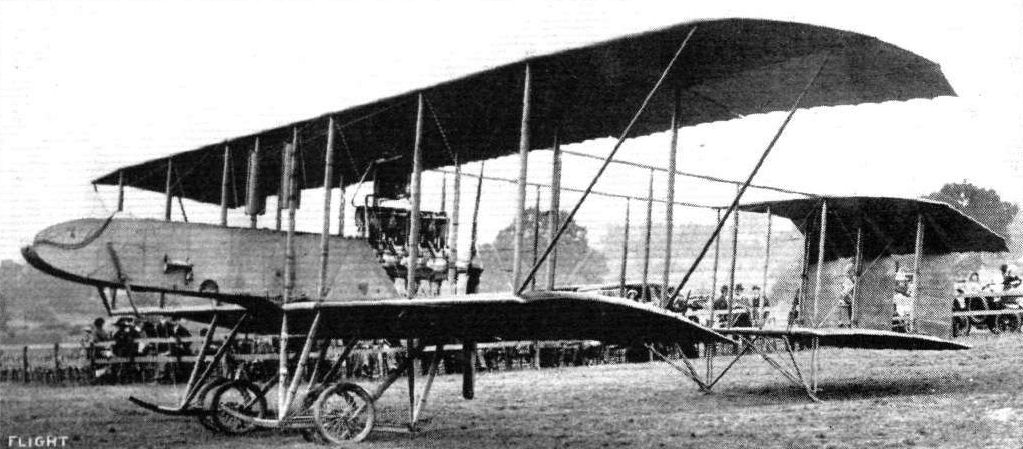M.Goodall, A.Tagg British Aircraft before the Great War (Schiffer)
Deleted by request of (c)Schiffer Publishing
GRAHAME-WHITE Charabanc biplane Type X
This was a further J.D. North design for passenger carrying, seating four passengers in wicker seats behind the pilot; it was later reported flying with eleven persons aboard. In appearance it resembled a scaled-up Henry Farman biplane with two and a half bays, top wing extensions and with triple rudders.
The main fuel tank was under the seats supplying a gravity tank on one of the inboard interplane struts. An oil tank of similar size was fitted on the opposite strut. A horn and exhaust silencer were fitted.
The machine flew initially with a 90hp Austro-Daimler on 30 August 1913, piloted by Louis Noel with two passengers, the load was progressively increased when the more powerful engine, acquired from Cody's estate, was fitted in September. The machine was reported to show a great increase in speed with this. Early in November a 100hp Green was fitted to qualify the machine as 'all British', in order to enter the contest for the British Empire Michelin Trophy No. 1. This duly happened, when on 5 November 1913 RH Carr flew the required 300 miles, flying continuously between Hendon and Brooklands, to win the prize.
A further use was made of the Charabanc to carry out the first parachute descent from an aeroplane in Britain on 9 May 1914. The aircraft still retained the Green engine, when exhibited, less wings, at Olympia in March 1914. Only one aircraft was built.
Power:
120hp (Initially 90hp) Austro-Daimler six-cylinder inline water-cooled
100hp Green six-cylinder inline water-cooled with 9ft 6in diameter Lang propeller
Data
Span top 62ft *
Span bottom 43ft 8in
Chord 7ft 6in
Gap 6ft 2in
Area 790 sq ft *
Area tailplane 128 sq ft
Area elevator 39 sq ft
Area rudders 36 sq ft
Length 37ft 6in *
Weight 2,000 lb
Weight five up 3,100lb
Speed 30-55 mph
(Averaged 51mph in Michelin Contest)
*The Aeroplane quoted 62ft 6in, 849 sq ft and 38ft 6in respectively
P.Lewis British Aircraft 1809-1914 (Putnam)
Grahame-White Type 10 Charabanc
After Hendon Aerodrome was opened to the public on 1st October, 1910, the demand for passenger flights increased rapidly to such an extent that the usual two-seat aeroplanes available were found to be inadequate for the purpose. During 1913, it was considered by the Grahame-White company that a machine capable of carrying several passengers during normal operations, and not just as a stunt, would help to meet the situation. The big Type 10 Charabanc was evolved, therefore, by J. D. North, being completed at the end of the summer and tested by Mons. Louis Noel, the chief pilot of the Grahame-White organization.
The Charabanc proved to be very successful indeed, and commenced a useful career of passenger flying at Hendon by setting up a world record on 22nd September, 1913, when Noel took off with seven others on board and remained aloft for 17 mins. 25.4 secs. Just over a week later, on 2nd October, the same pilot bettered this achievement by cramming nine passengers into the nacelle and staying airborne for 19 mins. 47 secs. A 120 h.p. Austro-Daimler engine was used in the machine to provide adequate power for weight lifting, but. for the purpose of making an attempt on the 1913 Michelin Cup No. 1 and to achieve all-British status, this was replaced later in the month by the 100 h.p. six-cylinder Green from the biplane in which Cody crashed fatally. The modification proved worthwhile for, on 6th November, R. H. Carr won the Cup and its accompanying ?500 prize by covering the minimum 300 miles stipulated flying to and fro between Hendon and Brooklands. Six months afterwards, on 9th May, 1914, the Charabanc was used by W. Newell to take him up over Hendon when he made the first parachute descent in Great Britain from an aeroplane. R. H. Carr again piloted the aircraft, while the intrepid parachutist perched on the port undercarriage skid, clutching his parachute in his arms. When the time came to jump he was pushed off by the foot of F. W. Goodden, who was sitting above him on the lower wing.
With its span of 62 ft. 6 ins. and a loaded weight of 3,100 lb., the Charabanc was one of the largest British aeroplanes built before the 1914-18 War. Seated in the prow of the long nacelle, the pilot had an excellent view. The passengers were accommodated behind him side-by-side on two rows of wicker seats. The engine was fitted with an effective silencer and, in keeping with its character, the Charabanc was equipped with a motor horn which could be heard from the ground when the machine was in flight.
SPECIFICATION
Description: Five-seat pusher biplane. Wooden structure, fabric covered.
Manufacturers: Grahame-White Aviation Co. Ltd., Hendon, London, N.W.9.
Power Plant: 120 h.p. Austro-Daimler, 100 h.p. Green.
Dimensions: Span, 62 ft. 6 ins. Length, 37 ft. 6 ins. Wing area, 790 sq. ft.
Weights: Empty, 2,000 lb. Loaded, 3,100 lb.
Performance: Maximum speed, 51 m.p.h. Cruising speed, 45 m.p.h. Landing speed, 30 m.p.h.
Журнал Flight
Flight, September 20, 1913.
THE AERIAL DERBY.
PILOTS AND HOW TO RECOGNISE THE MACHINES.
No. 1. The Grahame-White Five-seater Biplane.
This machine may be easily recognised, mainly by its great size, but also by the fact that it has no elevator in front of the main planes. It is also the only machine in the race which has three rudders.
THE MACHINES, WITH SOME DETAILS.
No. 1. 120 h.p. Austro-Daimler Five-seater Grahame-White Biplane. This biplane is the latest and largest of those built by the Grahame-White Co. Some idea of its size may be gathered from the fact that its maximum span is 62 ft. It is designed to carry four passengers besides the pilot, and has proved itself a remarkably steady and efficient flyer. The pilot sits at the extreme front of the nacelle, and so obtains an excellent and unrestricted view, while the passengers are seated in pairs behind him.
The engine is a 120 h.p. water-cooled Austro-Daimler, with the radiator slung by means of wires over the engine, where the full cooling effect of the draught caused by the machine's flight is felt.
Flight, October 11, 1913.
THE GRAHAME-WHITE "AERO-CHAR-A-BANCS."
So popular have the passenger flights at Hendon proved, that, although the Grahame-White Aviation Co.'s "stables" include about half a dozen passenger-carrying machines, these have been found inadequate to cope with the ever-increasing demand, especially at week-ends, for trips round the aerodrome. In order to meet this contingency, a new machine, capable of carrying four passengers - it has already made records with 7 and 10 - in addition to the pilot, has been constructed, and it has already become very popular amongst the spectators, who have nicknamed it "the char-a-bancs."
Superficially the new five-seater bears a certain resemblance to the H. Farman biplanes, but a close inspection reveals the fact that this resemblance is confined to the general disposition of the various members. Aerodynamically it is quite different, and its designer - Mr. J. D. North - has managed to incorporate in it a good many cleverly conceived and skilfully executed constructional details, some of which are shown in the accompanying sketches.
The scale drawings and photographs show the machine to be of the engine behind or "pusher" type, with the pilot's and passengers' seats placed well out in front in a nacelle built up in the usual way of four longerons of ash, connected by struts and cross members of the same wood, the whole structure being rendered rigid by means of diagonal cross wiring. Right out in the nose of the nacelle is the pilot's seat, from where he has an unrestricted view in all directions. In front of him are the levers by means of which the machine is controlled, consisting of a foot bar for controlling the rudders, and a single, central, tubular column mounted on a transverse rocking-shaft, which carries on its extremities, and outside the nacelle, two crank levers, from which cables run to the corresponding levers on the elevator. The cables, through which the ailerons are operated, are lead through the central column and transverse shaft and thence round a pulley to the ailerons. These are operated by the pilot by means of a rotatable hand wheel mounted on the upper extremity of the central column. The axle carrying the drum around which passes the warping cable, is provided with semi-thrust ball bearings in order to reduce frictional resistance, and the control wheel itself is secured on the axle by a large nut forcing it up the tapering axle in a similar manner to that employed in securing a propeller to its shaft. The cable drum is integral with the axle, the whole being machined out of one solid piece of steel.
To the right and left of the pilot are mounted the various instruments, such as pressure gauge, revolution indicator, altimetre, compass, air speed indicator, etcetera. The etcetera includes a motor horn, which creates quite a lot of amusement when sounded while the machine is in flight, as it can be distinctly heard above the very effectively silenced roar of the engine.
Behind the pilot are the four passengers' seats, arranged in pairs. Plenty of room is afforded so that the passengers may enjoy their flight in comfort as distinct from the more or less cramped positions occupied by the passenger in older types of machines. The longerons of the nacelle are extended to carry the engine, a 120 h.p. Austro-Daimler, which is so rigidly mounted that hardly any vibration is felt when sitting in one of the seats. Four stout steel tubes running from the engine bed to the front and rear spars respectively, transmit the thrust to the wings, the unit formed by the nacelle and engine bearers being further secured by means of steel wires taken to various points on the machine.
Slung on the cross wires of the central cellule is the radiator, which, situated as it is right above the engine and between the main planes, receives the maximum amount of draught, thus rendering it very effective. In the bottom of the nacelle, and under the passengers' seats, is a large petrol tank with a capacity of 28 gallons.
From this tank petrol is forced by pressure to a service tank mounted on one of the inner plane struts, from whence it runs by gravity to the two carburettors. Oil is carried in a similar tank mounted on the corresponding plane strut on the other side of the nacelle. As we have already said, the engine is very effectively silenced by means of a silencer designed by Mr. North, and consisting of two concentric cylinders, the inner one of which is divided into 6 compartments, and perforated with small holes. After an extended run of the engine, the inner cylinder will be found to be red hot, while the outer one is barely warm. The advantage of this will be apparent to any one who has ever experienced the sensation of carelessly resting a hand on a hot exhaust pipe.
The wings are constructed in the usual way of ribs, built over two main spars. The ribs are built up of webs of three-ply wood with flanges of spruce, while the main spars are built up of spruce hollowed out for lightness. In section the wings are provided with a very pronounced camber, thus rendering the machine somewhat slow; her flying speed is about 45 m.p.h.
Four tail booms of spruce, hollowed out in a similar manner to the main spars, carry at the rear the biplane tail planes. To the trailing edge of the upper tail plane is hinged the elevator, while hinged to the outer tail struts are the three rudders by means of which the machine is steered. One of the accompanying sketches shows one of the two tail skids by means of which the tail is protected against contact with the ground. Hollow spruce struts are employed in the tail, outrigger and between the main planes in the outer portion, whilst the 8 inner plane struts are made of ash. A very strong landing chassis of the type usually employed in biplanes, and belonging to the wheel and skid type, supports the machine on the ground.
Flight, March 14, 1914.
WHAT THERE WILL BE TO SEE AT OLYMPIA.
THE EXHIBITS.
Grahame-White (Grahame-White Aviation Co.). (40.)
ON the stand of the Grahame-White Avation Co., Ltd., will be shown two biplanes, one of which is already known to our readers through descriptions in the columns of FLIGHT, i.e., the five-seater biplane which established a record by carrying ten passengers at Hendon. This machine will be all-British, as it will be fitted with a 100 h.p. Green engine.
<...>
Flight, March 28, 1914.
THE OLYMPIA EXHIBITION.
THE EXHIBITS.
GRAHAME-WHITE. (GRAHAME-WHITE AVIATION CO., LTD.)
ON this stand were shown a complete two-seater biplane and the central portion of the Grahame-White five-seater biplane which established a record at Hendon by carrying ten passengers. A third machine, the Morane "Parasol," did not arrive in time for the Show. The 100 h.p. Grahame-White Five-Seater is already known to our readers through a very detailed description in the columns of FLIGHT, and it is therefore sufficient here to state that it is fitted with a 100 h.p. Green engine, so that it is in fact an all-British machine.
<...>
Flight, May 15, 1914.
FLYING AT HENDON.
<...>
After this all the machines were returned to the hangars; but later in the evening an interesting experiment was made. This was a parachute descent from the five-seater biplane. Mr. W. Newell, an experienced aeronaut-parachutist, who was to make the descent, and F. W. Goodden - who has also made numerous parachute descents - after considering various places from where the leap could be made with safety, finally decided that a temporary seat should be made above the left-hand skid of the chassis, so that the parachutist could sit there with his feet on the latter ready to jump off. A rope seat was, therefore, made between the front and diagonal skid struts and all was ready. Newell took his "seat" with his parachute, folded and tied with a breaking cord, on his lap, and with Carr in the pilot's seat and Goodden and Lillywhite as passengers the aerobus started off at 7.45 p.m. After climbing for 18 minutes, an altitude of 2,000 feet was reached, and then Newell made his leap into space. The parachute opened almost immediately and floated gracefully to earth, Newell swinging about tremendously at first. One of the spectators was George Reynolds, the official timekeeper, who of course could not refrain from consulting his chronometer for timing the descent, which was given as 2 mins. 22 secs. Newell made a successful landing close to No. I pylon, and a small crowd was close at hand to give him the welcome he deserved, which consisted of many hand-shakes and "three cheers." A minute or so after he touched the ground the aerobus landed. Considerable amusement was caused by Goodden announcing that he climbed out of the nacelle and got close to Newell, and, when the time came, assisted him off with his foot! Newell, however, was so cold, that he did not notice this, in fact he said he was unable to feel if he was standing on the skid or not. The parachute used was a standard type 26 ft. in diameter, 30 ft. long and 40 lbs. in weight. It may be remarked that this is the first time that a parachute descent has been made from an aeroplane in this country, and we understand that a special seat is to be fitted to the aerobus for similar demonstrations.
<...>
 |
Журнал - Flight за 1913 г.
|
| THE GRAHAME-WHITE CHAR-A-BANCS. - A three-quarter view from the front.
|
 |
P.Lewis - British Aircraft 1809-1914 /Putnam/
|
| The Grahame-White Charabanc fitted with Austro-Daimler engine at Hendon with Claude Grahame-White in the front cockpit and the machine's designer, J. D. North, second from the left.
|
 |
Журнал - Flight за 1913 г.
|
| The Grahame-White five-seater.
|
 |
P.Lewis - British Aircraft 1809-1914 /Putnam/
|
| Mechanic taking a ride on the lower wings of the Grahame-White Charabanc being taxied by Louis Noel at Hendon.
|
 |
M.Goodall, A.Tagg - British Aircraft before the Great War /Schiffer/
|
| GW Charabanc of 1913-1914 was designed to carry four passengers but flew with eleven aboard. Fitted with a Green engine.
|
 |
Журнал - Flight за 1913 г.
|
| THE GRAHAME-WHITE CHAR-A-BANCS. - View from behind.
|
 |
Журнал - Flight за 1913 г.
|
| THE GRAHAME-WHITE CHAR-A-BANCS. - A view showing the mounting of the Austro-Daimler engine.
|
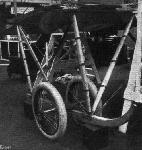 |
Журнал - Flight за 1914 г.
|
| Part of the chassis of the Grahame-White five-seater.
|
 |
P.Lewis - British Racing and Record-breaking Aircraft /Putnam/
|
| Louis Noel at the controls of the Grahame-White Charabanc with, behind him, the nine passengers whom he took up at Hendon on 2 October, 1913, to set a new British and world record with a total live load of 1,372.5 lb. Fourth from the left is J. D. North and at the extreme right is R. H. Carr. On the side of the nacelle is the Charabanc's famous Klaxon horn.
|
 |
A.Brew - Boulton Paul Aircraft since 1915 /Putnam/
|
| The Grahame-White Type 11 Aerobus designed by John Dudley North (4th from left), which set a world record, lifting 10 people including the pilot, Louis Noel, in 1913.
|
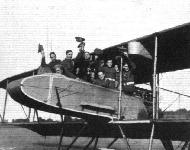 |
Журнал - Flight за 1915 г.
|
| A contingent of the Queen's Surreys, at Hendon, testing the holding capacity of the Grahame-White "char-a-bancs." M. Osipenko, the Russian pilot, is in the pilot's seat.
|
 |
Журнал - Flight за 1914 г.
|
| The parachute descent of Mr. W. Newell at Hendon on Saturday last, when he descended from a height of 2.000 ft. by means of this parachute from a Grahame-White biplane piloted by Mr. Reginald Carr, the descent from the time of his leaving the aeroplane occupying 2 mins. 22 secs. Mr. Newell is seen on the skid exactly as he ascended for the feat, immediately above him being Mr. F. W. Goodden, who assisted him to jump from the aeroplane, whilst in the pilot's seat is Mr. Carr, with Mr. J . Lillywhite in the centre.
|
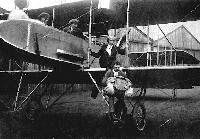 |
P.Lewis - British Aircraft 1809-1914 /Putnam/
|
| W. Newell about to ascend in the Grahame-White Charabanc for a parachute jump over Hendon.
|
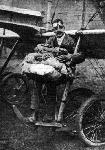 |
Журнал - Flight за 1914 г.
|
| Mr. W. Newell, who has been again making parachute descents at Hendon, comfortably tucked up on his perch, prior to a descent last week-end.
|
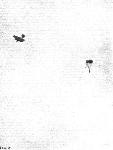 |
Журнал - Flight за 1914 г.
|
| Mr. W. Newell's parachute descent from aeroplane at Hendon. - a distant snap taken a few moments after he had parted from the aeroplane.
|
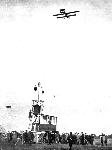 |
Журнал - Flight за 1915 г.
|
| A REMEMBRANCE OF HENDON BEFORE THE WAR. - A trio in the air. Note on the five-seater the men being carried on the wing tips.
|
 |
Журнал - Flight за 1915 г.
|
| Mr. Osipenko on the Graliame-White 5-seater passenger-carrying 'bus at Hendon.
|
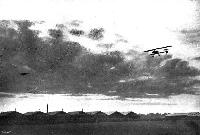 |
Журнал - Flight за 1913 г.
|
| The arrival of the Champel biplane flown by Mr. Sydney Pickles, with Mr. Lawford as passenger, at the Hendon Aerodrome, on Saturday, whilst the competitors in the Aerial Derby were absent on their race round the circuit. On the left is seen the Grahame-White 5-seater biplane, with a mechanic sitting on each wing tip.
|
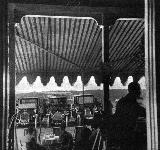 |
Журнал - Flight за 1914 г.
|
| Loading up the five-seater Grahame-White biplane at Hendon Aerodrome, as seen from the pavilion.
|
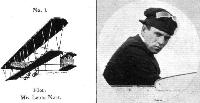 |
Журнал - Flight за 1913 г.
|
| Pilot: Mr. Louis Noel.
|
 |
F.Mason - The British Fighter since 1912 /Putnam/
|
| The Grahame-White Type 11 'Warplane' on display at Olympia on 16 March 1914. Behind it on the left is one of Grahame-White's famous pre-War ‘Charabancs’.
|
 |
Журнал - Flight за 1913 г.
|
| Sketch of the nacelle, showing seating accommodation for pilot and four passengers.
|
 |
Журнал - Flight за 1913 г.
|
| R. H. Carr, the Hendon aviator, at the wheel of the Grahame-White all-British "aero-'bus," with which he has just won the British Michelin Trophy and L500. The passenger, seated behind, is the engineer who accompanied him on his flight. Mr. Carr is making an attempt this week for the Michelin Cross-Country Speed Competition, the trophy for which carries with it a prize of L800.
|
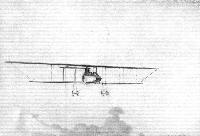 |
Журнал - Flight за 1913 г.
|
| An Impression of the Grahame-White charabancs flying at Hendon. From an original drawing by Roderic Hill.
|
 |
Журнал - Flight за 1913 г.
|
| Sections of wing spars.
|
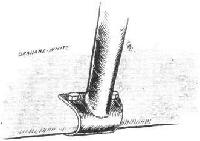 |
Журнал - Flight за 1913 г.
|
| How crank-lever is attached to leading edge of aileron.
|
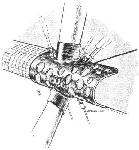 |
Журнал - Flight за 1913 г.
|
| A skid strut joint.
|
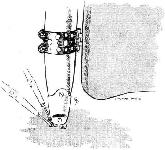 |
Журнал - Flight за 1913 г.
|
| A neat rudder hinge.
|
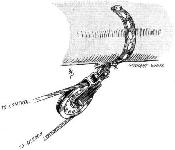 |
Журнал - Flight за 1913 г.
|
| Another neat fitting - the universally-jointed pulley for aileron cable.
|
 |
Журнал - Flight за 1913 г.
|
| One of the tail skids.
|
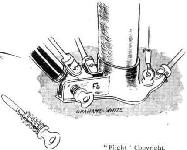 |
Журнал - Flight за 1913 г.
|
| Sketch of quickly detachable fitting of tubular extension struts to main plane struts.
|
 |
Журнал - Flight за 1914 г.
|
| The 100 h.p. five-seater Grahame-White biplane.
|
 |
P.Lewis - British Aircraft 1809-1914 /Putnam/
|
| Grahame-White Type 10 Charabanc
|
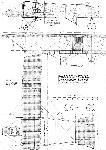 |
Журнал - Flight за 1913 г.
|
| GRAHAME-WHITE 5-SEATER BIPLANE. - Plan, side and front elevations to scale.
|

